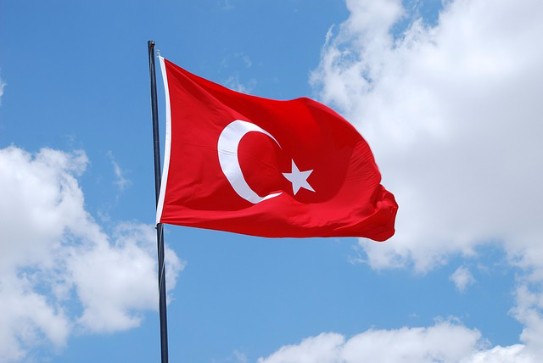 https://www.flickr.com/photos/132470584@N06/
https://www.flickr.com/photos/132470584@N06/
Briefing Note- Turkey as a Rising Donor State
Background
- First established in 1992, the Turkish Cooperation and Coordination Agency Directorate (TIKA) projects span 5 continents (TIKA).
- Countries with “shared cultured and geography” are recognized as official priorities
- Priority Interest Areas include institutional development, education, health, water supply and sanitation, agriculture and cultural cooperation (TIKA).
- Two emergency aid divisions:
- Syrians living inside of Turkey
- Assistance in response to wars, conflicts and natural disasters (TIKA Report, 2012).
- According to TIKA, Afghanistan is largest recipient of TIKA aid
- Three operational field offices in Afghanistan: Kabul, Mazar-I Sharif and Wardak plus an embassy in Kabul
- TIKA recognizes a total of 806 projects between 2005-2014
- Including: 240 education projections, 20 transportation, 214 health projects serving 5 million patients, 35 water supply and sanitation projects, 34 agriculture, livestock and forestry projects (TIKA)
- In the last 13 years, Turkey has gone from a net receiver to a net donor of aid. It now ranks 4th globally for OAD (Official Aid Dollars) in USD behind the US, EU, and UK in USD.
- According to OECD, OAD in 2013 accounted for .42% of GNI, a 29.7% increase from 2012 (OECD).
- In 2002, OAD stood at $85 million. By 2011, OAD stood at $1.27 billion.
- Turkey undertook approximately four times more aid projects from 2003 – 2011 than from 1992-2002.
- The sudden and dramatic increase in OAD is attributed to the policies of the ruling Justice and Development Party (AK) and is not universally supported.
- Two emergency aid divisions:
Refugees
- Turkey hosts the largest refugee population in the world (Al Jazeera)
- Officially hosting 1.7 million Syrian refugees, with the total likely just over 2 million (Al Jazeera, UNHCR)
- From April 2012 to Feb. 2013 Turkey spent $600 million on these specific refugee populations. By April 2015, the number increased to $5.6bn (AA).
- Officially hosting 1.7 million Syrian refugees, with the total likely just over 2 million (Al Jazeera, UNHCR)
- Turkey’s refugee camps are widely heralded as the best in the world (UNHCR, DRC, NRC).
- Approximately 200,000 Syrian refugees currently reside in a formal camp
- However, 4 out of 5 refugees live outside of camps and are solely responsible for their own well-being
- Until October 2014, Turkish law only granted refugee status to European asylum seekers. There is now an exception specifically for Syrian refugees
- Under the provision, Syrian’s may stay until safe return can be secured, though it does not necessarily grant access to basic social services afforded to European refugees.
Impact
- Turkey’s rise as a donor nation is not universally supported by its citizens. The dramatic increases in refugees and the OAD budget at a time of economic uncertainty is beginning to weigh heavily on civil society.
- The lira continues to fall while unemployment, inflation are rising.
- Food inflation rose to 14 percent in April, as world prices saw five-year lows, according to the FAO.
- Potential for food insecurity brought on by conflict across the Middle East was a key agenda item at the May 8th G-20 meeting
- A public brawl involving 200 people in Sanliurfa last week highlighted the simmering tensions between Syrians and the residents of southeast Turkish cities refugee populations continue to grow (Vestnikkavkaza).
- The lira continues to fall while unemployment, inflation are rising.
Areas for Further Examination
- Turkey’s position as a net donor state as well as its donor behavior raises important questions for the region, and Turkish society. These questions include:
- What is the approximate value in USD of Turkish aid to Afghanistan in the last 10 years?
- What does the estimated $5.6bn spent on Syrian and Iraqi refugees and $16.5bn on Syrian and Iraqi conflicts include?
- With only 200,000 refugees in formal camps, where are the remaining 1.5+ million refugees? Can Turkey continue to absorb refugees at its current rate, or at all?
- Prior to the October 2014 amendment, was there a high percentage of European asylum seekers in Turkey warranting the aforementioned clause? Where were they from?






[…] just as he does in his new book Superpower: Three Choices for America’s Role in the World.. Briefing Note- Turkey as a Rising Donor State Maggie Feldman-Piltch Information of the growth of Turkey’s increasing role as a donor state in […]
Thank you for the very informative message on Turkey
Norman N VanToai, Ph. D.